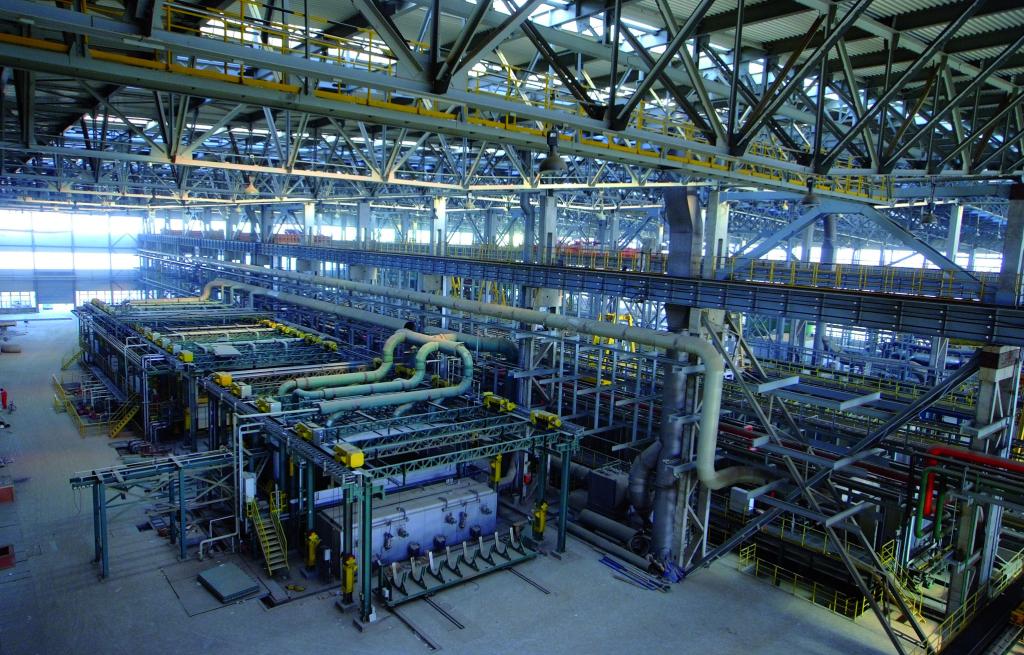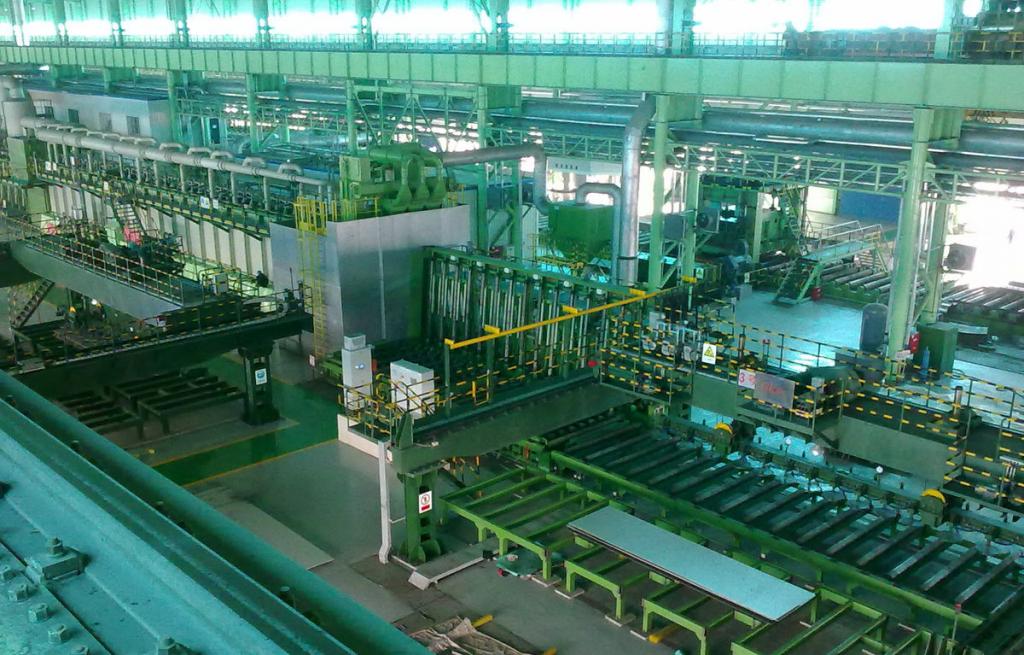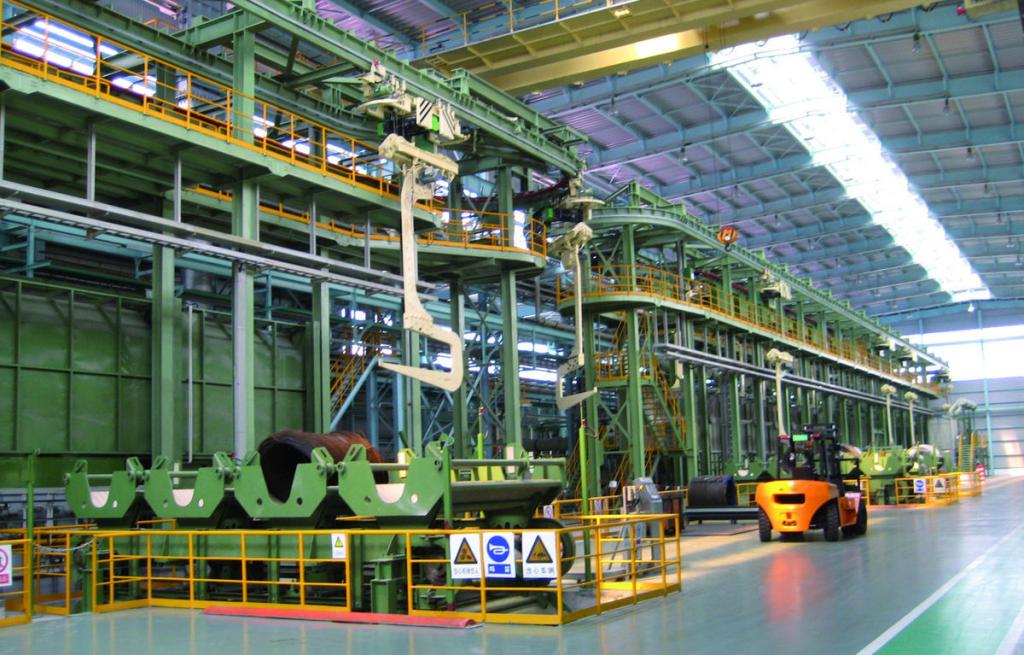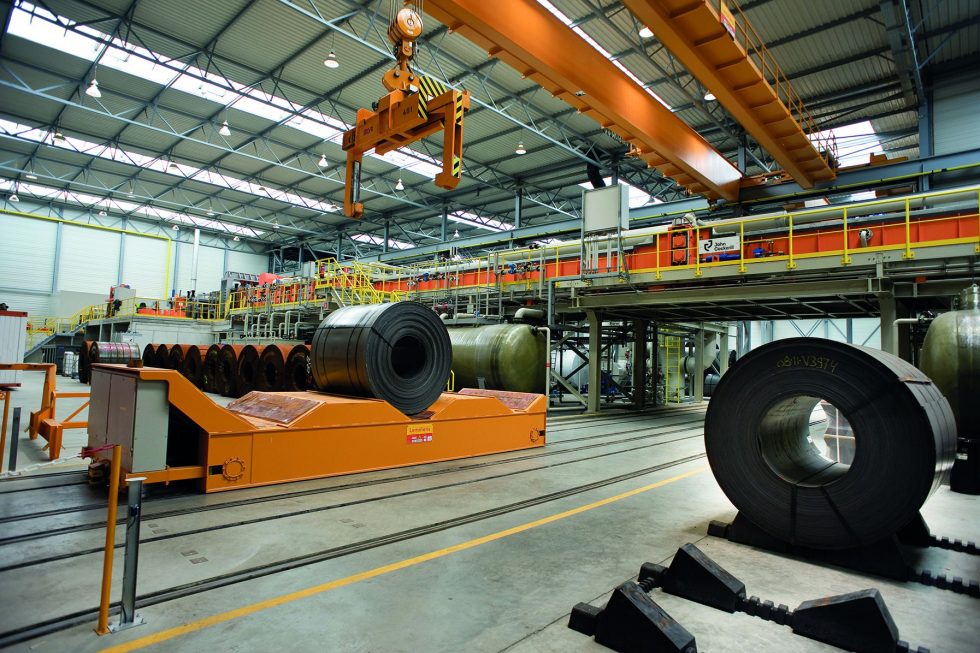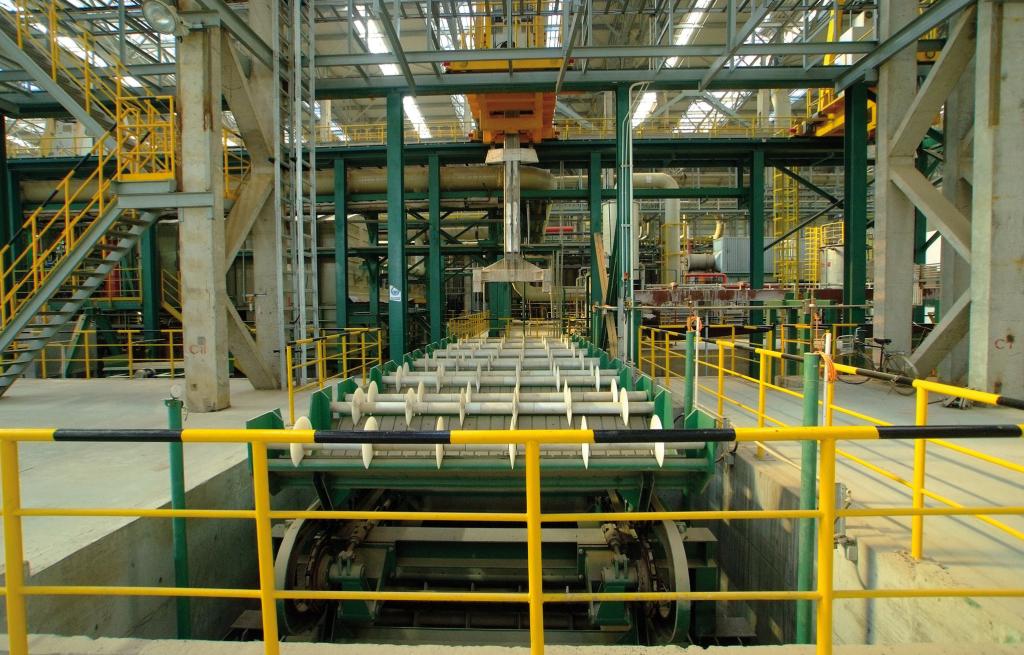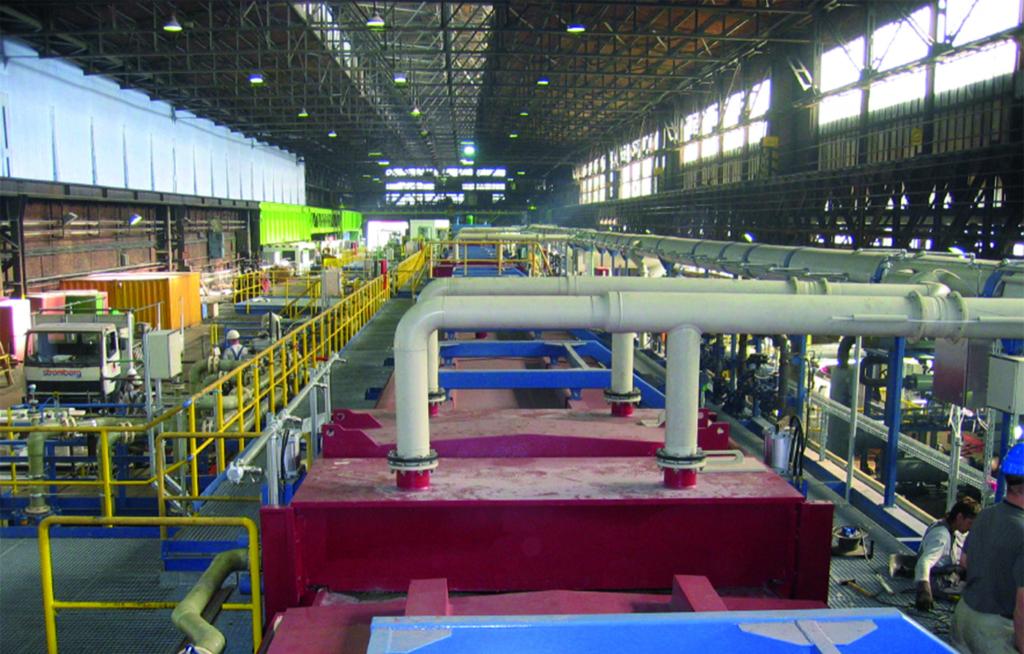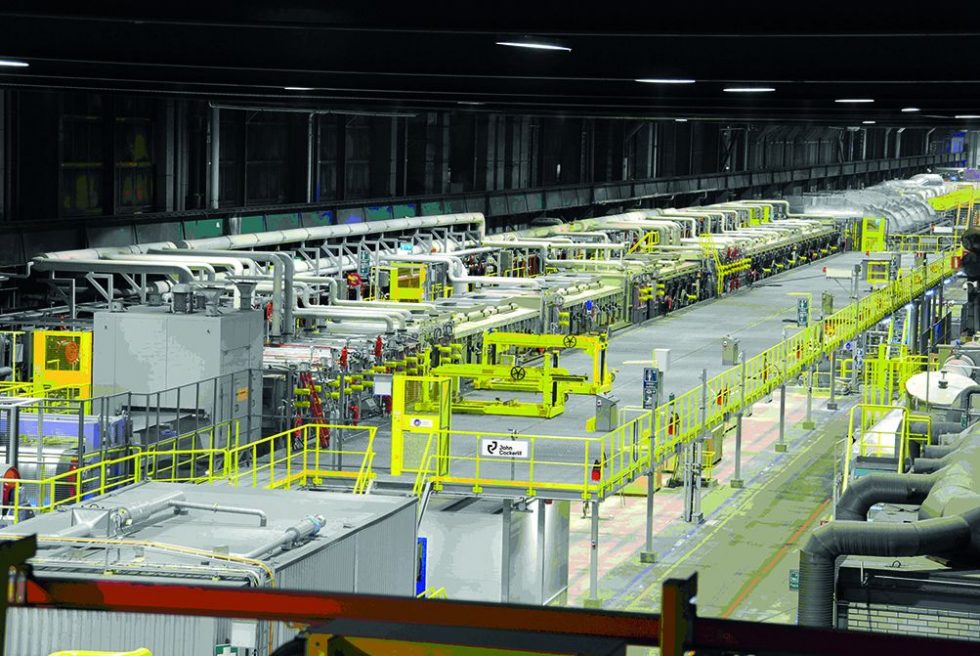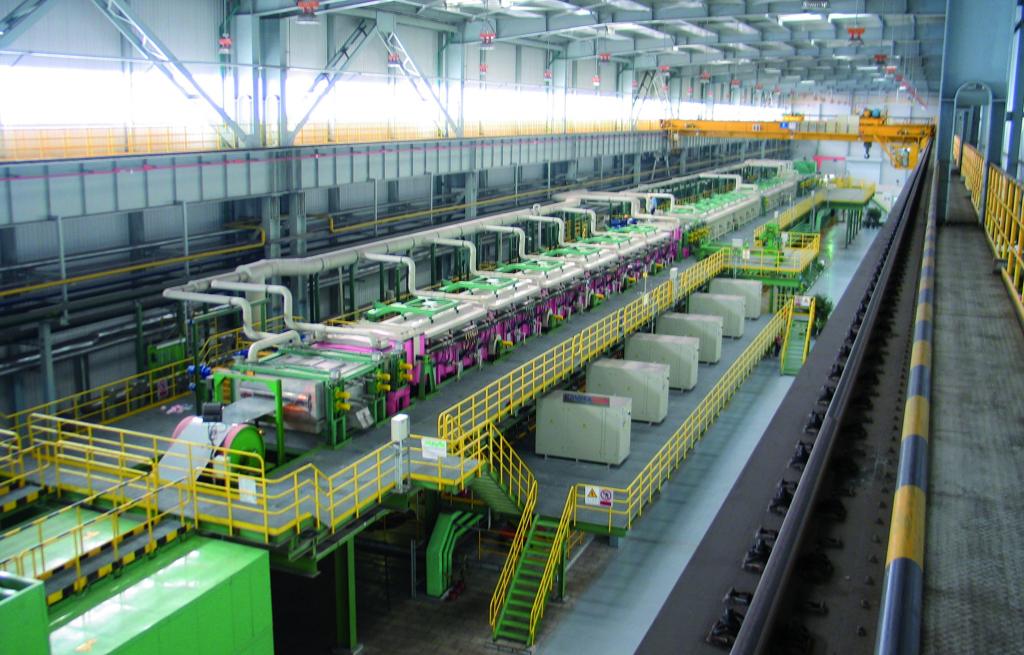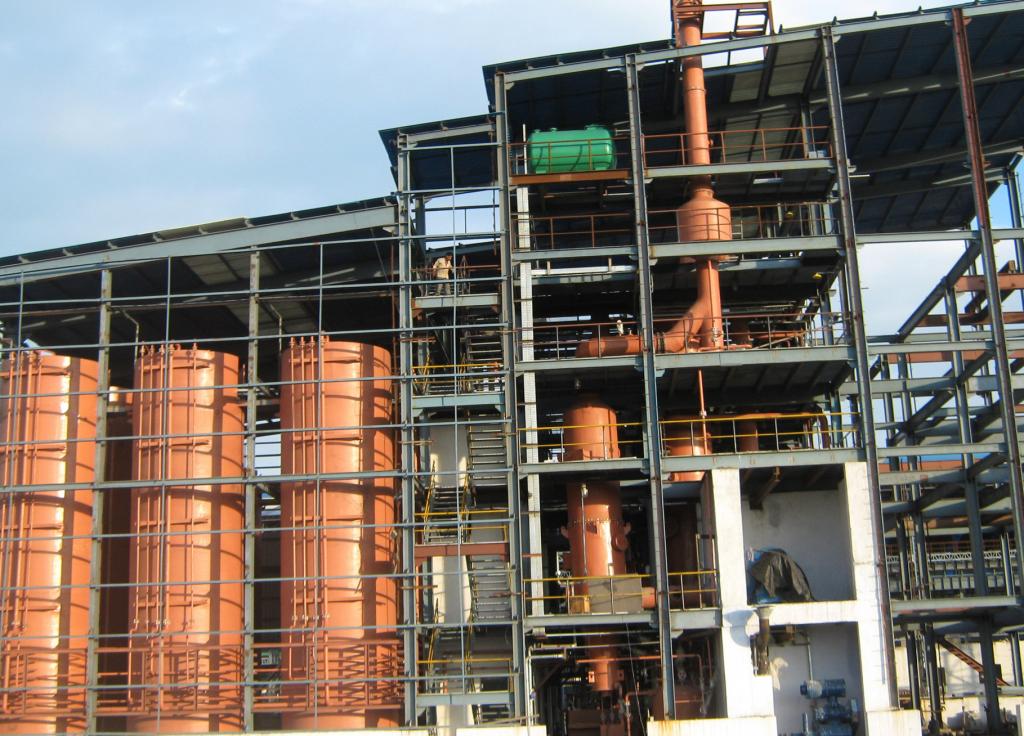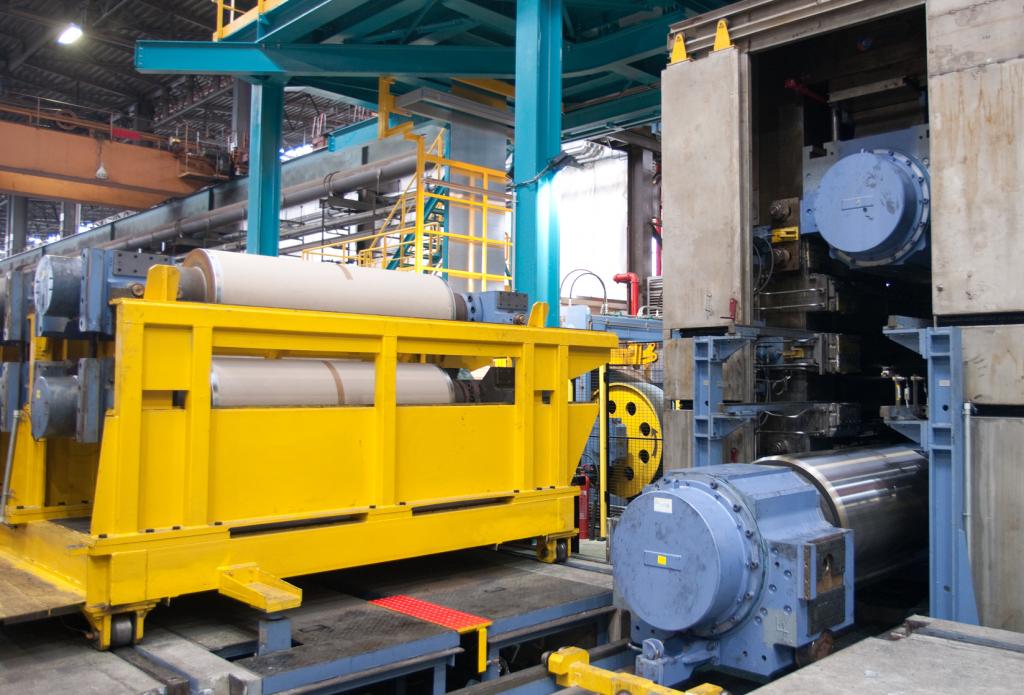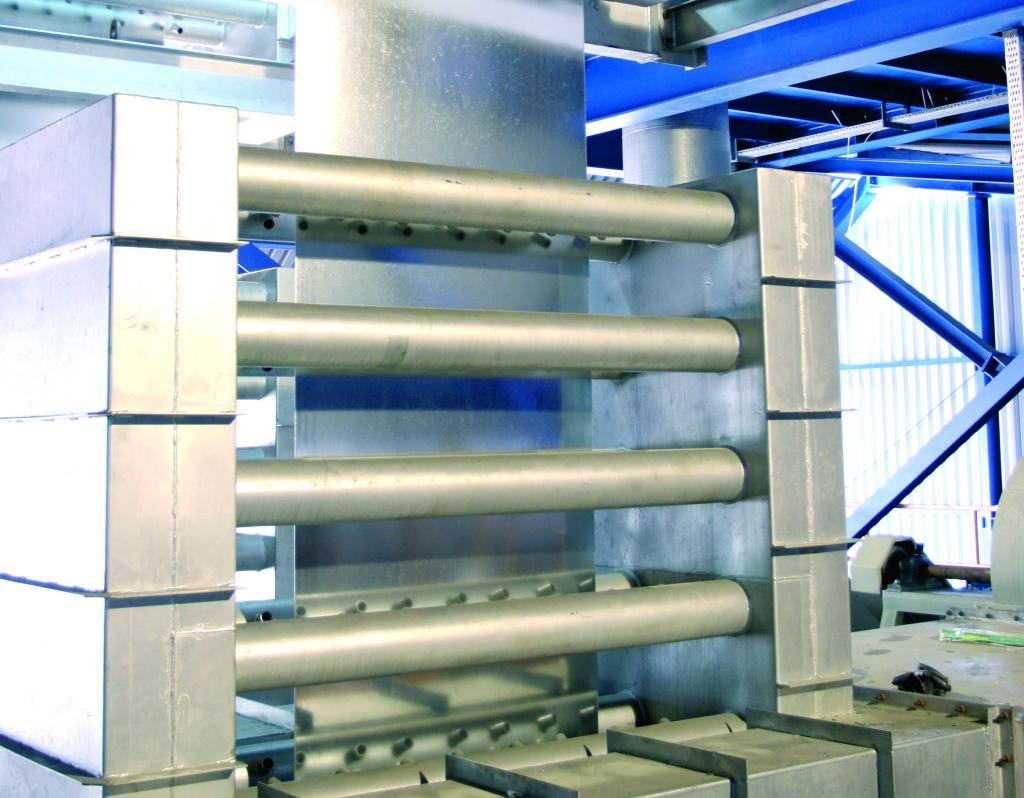Market leader John Cockerill offers a comprehensive range of pickling solutions for long, flat products, eliminating scale and other impurities that form during the carbon, stainless and silicon steel rolling process, as well as when rolling non-ferrous metals such as aluminium and copper. The pickling stage is central to the quality of the product during the later rolling and coating stages.
The high-turbulence pickling technology for continuous picking lines is both one of the most effective solutions on the market and one of the most economical. John Cockerill has designed a range of tray shapes and acid injection systems, the latest of which is the Spray Pickling module, with a view to covering all application types and product mixes. The entire range, along with the Pickling Process Management (PPM) system and the automated acid control system, is environmentally-friendly to use.
Push-pull pickling lines are used to process individual coils that cannot be stapled or welded. They offer excellent operational flexibility, making it possible to switch frequently between different strip sizes and grades of steel. Their unique design also means that these lines are the only practical way of pickling very thick coils. John Cockerill uses unique V-shaped trays that make it easier to uncoil the strip into the bath. Push-pull lines are very easy to use since they do not include an accumulator and are an economical solution for hot-finishing coils, at distribution centres or mini-mills, for example.
Semi-continuous and continuous picking lines are used for high-capacity production with continuous operation by welding or stapling the strips in question. Continuous lines operate at a constant speed and maximise production capacity, whereas semi-continuous lines run at a reduced speed whilst coils are being changed owing to the reduced accumulation capacity and are a more economical solution thanks to the more straightforward design of their accumulators.
John Cockerill’s Neolyte purification systems can be used in stainless steel pickling applications to transform harmful chromium (+6) into a non-toxic chromium (+3) and regenerate the electrolyte, thus reducing both the operating costs and the environmental impact of the line. The vapours containing NOX produced during the stainless steel pickling process are processed extremely efficiently by our latest-generation selective catalytic reactors (SCR-Technology).
Pickling lines for long products are highly specialised lines that process products by batch and are designed to reflect the shape of the product, the required process and the specific parameters determined by the client. In order to achieve the best possible quality and a high level of productivity whilst at the same time remaining economical and environmentally friendly, John Cockerill’s new-generation facility is fully automated using level II or III control systems, allowing multiple filling/emptying cycles to be performed thanks to an independent transport function and cascade rinsing using spray and immersion. It is also fitted with air and wastewater treatment systems designed to minimise emissions, an acid consumption control system and an acid recovery and regeneration process. High-turbulence pickling ensures consistent pickling conditions and a high heat transfer speed. The John Cockerill lines also incorporate a vibration system to ensure consistent pickling and a high-pressure spray rinsing system to ensure a clean surface with no residual contamination.
Design features
- John Cockerill Industry’s continuous picking lines are designed to optimise processing time, prevent excessive pickling, increase production profitability and reduce line length;
- High-turbulence pickling trays;
- Spray pickling modules;
- Pickling process management (PPM) system;
- Fully automated acid control system.
The range
- Push-pull and semi-continuous push-pull pickling lines
- Continuous pickling lines for treating carbon steel, including silicon steel. Continuous pickling lines (CPLs) can be incorporated into the following:
- One cold rolling mill (PLTCM)
- One annealing line for silicone steel
- Continuous pickling lines for treating stainless steel. These lines can be incorporated into the following:
- A hot strip annealing line (HAPL)
- A cold strip annealing line (CAPL)
- A hot/cold combined strip annealing line (H/CAPL)
- A skinpass annealing line (DRAP: Direct Roll Anneal and Pickle)
- Discontinuous pickling facilities for ferrous and non-ferrous metals
- Wire coil pickling lines
- Tube pickling lines
- Bar pickling lines
- Plate pickling lines
- Universal pickling lines
Key benefits
- The best possible product surface quality as a result of uniform pickling;
- The best possible production speeds;
- Optimised pickling settings thanks to the use of mathematical models;
- Reduced operating costs with consumption control;
- Environmentally-friendly operation;
- Low maintenance costs;
- Closed-circuit processing of acids, effluent and air.


